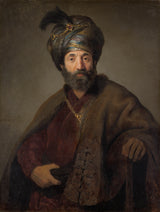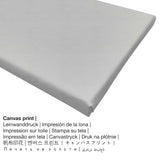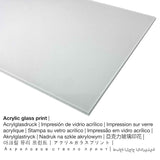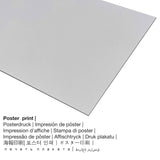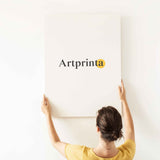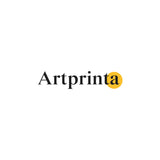Rembrandt van Rijn, 1635 - Nwoke na ejiji Oriental - mbipụta nka mara mma
Ụtụ gụnyere. Mbupu gbakọrọ na ndenye ọpụpụ.
Nkọwapụta akụkọ
Nke a kariri 380 afọ mpempe nka a na-akpọ Man in Oriental Costume e sere ya Rembrandt van Rijn. Nke mbụ tụrụ nha 98,5 x 74,5 cm (38 3/4 x 29 5/16 na) ma were ihe osise ese Usoro of oil on canvas. This piece of art is included in the National Gallery of Art's digital art collection, which is located in Washington D.C., United States of America. With courtesy of - National Gallery of Art, Washington (ọha na eze).: . Ọzọkwa, itinye n'ọnọdụ nke mmepụta dijitalụ bụ Eserese with an image ratio of 3 : 4, which means that the length is 25% shorter than the width. The painter Rembrandt van Rijn was a European artist, whose artistic style was primarily Baroque. The Baroque artist lived for 63 years, born in the year 1606 na Leiden ma nwụọ na 1669.
Ozi nkowa mgbakwunye na ihe osise mbụ sitere na webụsaịtị museum (© Nwebiisinka - National Gallery of Art - www.nga.gov)
Mgbe Rembrandt van Rijn mụtachara isi ihe gbasara eserese na eserese n'obodo ya Leiden, Rembrandt van Rijn gara Amsterdam na 1624 ka ya na Pieter Lastman mụọ ihe ọnwa isii (1583–1633), onye na-ese akụkọ ihe mere eme ama ama. Mgbe ọ gụsịrị ọzụzụ ya Rembrandt laghachiri na Leiden. N'ihe dị ka afọ 1632 ọ kwagara Amsterdam, wepụta onwe ya ngwa ngwa dị ka onye na-eme ihe nkiri nke obodo, ọkachamara na eserese akụkọ ihe mere eme na eserese. Ọ natara ọtụtụ ọrụ ma dọta ọtụtụ ụmụ akwụkwọ ndị bịara ịmụta usoro ihe osise ya.
In this imposing half-length image, a bearded man wearing an elaborate, bejeweled turban stares out at the viewer, his features strongly modeled by light streaming in from the left. A fur-lined cape, loosely clasped at the neck with a gold chain, covers his shoulders. His right hand grasps the sash that wraps around his waist, while his other hand rests on a wooden staff. An aigrette, a type of pin with a tuft of ornamental bird feathers that was a standard part of Ottoman attire, secures a heavy gold chain on the man’s turban.
Rembrandt, as a history painter, was particularly intrigued by the Middle East, where so many of the Biblical stories he frequently depicted had taken place. Rembrandt’s paintings, drawings, and etchings of the 1630s included numerous figures who wear Middle-Eastern garb. By the early seventeenth century the commercial enterprises of Dutch merchants had reached the Middle East, so exotically dressed foreigners were a familiar sight in the streets and marketplaces of Amsterdam. Exotic attire became a fashion fad, and Dutch men, including Rembrandt himself, would sometimes be portrayed wearing similar outfits. At the same time, Dutch collectors avidly sought to acquire exotica from all parts of the world, including shells, swords, musical instruments, and costumes, which they would then display for visitors to admire. Rembrandt owned such a collection, known as a kunstkamer, or cabinet of curiosities. His encyclopedic holdings of art and artifacts served as props for Rembrandt and his students, but the artist was also motivated to amass such a collection by his desire to be recognized as a full-fledged member of the class of gentlemen-collectors.
Ozi nka ahaziri
| Aha nke ihe nka: | "Man in Oriental Costume" |
| Nhazi nka: | sere |
| Okwu mkpokọta: | nka ochie |
| Narị afọ nka: | 17th narị afọ |
| Emepụtara na: | 1635 |
| Ogologo afọ nka nka: | 380 afọ |
| Usoro nka izizi: | mmanụ na kwaaji |
| Nha nke ihe osise izizi: | 98,5 x 74,5 cm (38 3/4 x 29 5/16 na) |
| Ụlọ ihe ngosi nka: | Nnukwu osisi nke Art |
| Ebe ebe ngosi nka: | Washington DC, Njikota Obodo Amerika |
| website: | www.nga.gov |
| Licensedị ikike: | ngalaba ọha |
| Site n'aka: | National Gallery of Art, Washington |
Ozi nka ahaziri
| Aha onye nka: | Rembrandt van Rijn |
| Gender: | nwoke |
| Nationality: | Dutch |
| Ọrụ onye na-ese ihe: | onye na-ese ihe |
| Obodo onye nka: | mba netherland |
| nhazi ọkwa: | nna ukwu ochie |
| styles: | Baroque |
| Nwụrụ na afọ nke: | 63 afọ |
| Afọ ọmụmụ: | 1606 |
| Ebe amụrụ onye: | Leiden |
| Afọ ọnwụ: | 1669 |
| Nwụrụ na (ebe): | Amsterdam |
Họrọ nhọrọ ihe onwunwe
In the product dropdown lists you can pick your individual size and material. Pick your preferred material and size between the subsequent alternatives:
- Akwụkwọ mmado ebipụtara (akwa akwa akwa): A poster is a printed flat canvas paper with a slight structure on the surface, that resembles the original artwork. The poster print is designed for framing your art copy using a custom-made frame. Please note, that depending on the size of the canvas poster print we add a white margin 2-6cm around the painting to facilitate the framing with a custom frame.
- Mbipụta nke aluminom: An Aluminium Dibond print is a material with an outstanding depth effect. Its non-reflective surface structure creates a modern look. The white & bright parts of the artpiece shine with a silky gloss but without glare.
- Mbipụta enyo acrylic: A glossy print on acrylic glass, often referenced as a UV print on plexiglass, will change your favorite original work of art into stunning décor. Additionally, the acrylic art print forms a good alternative to dibond and canvas art prints. The work of art is custom-made thanks to modern UV printing technology. The great upside of a plexiglass print is that contrasts and smaller details will be recognizeable due to the very fine tonal gradation of the print. Our real glass coating protects your custom art replica against light and heat for between 4 and six decades.
- Mbipụta kanvas: A printed canvas material stretched on a wood frame. Hanging your canvas print: Canvas Prints have the advantage of being low in weight, which means that it is easy and straightforward to hang up the Canvas print without extra wall-mounts. Therefore, canvas prints are suitable for any kind of wall.
Nkọwa ihe ahaziri ahazi
| Ụdị edemede: | mmepụta nka |
| Usoro mmeghari: | mmeputakwa n'ụdị dijitalụ |
| Usoro nhazi: | Mbipụta UV ozugbo (mbipụta dijitalụ) |
| Production: | German mere |
| Stockdị ngwaahịa: | na mmepụta ihe |
| A na-atụ aro iji ngwaahịa eme ihe: | ihe ndozi ụlọ, nka mgbidi |
| Nhazi: | usoro eserese |
| Ụdị anya: | ogologo: obosara - 3: 4 |
| Ihe: | ogologo bụ 25% mkpụmkpụ karịa obosara |
| Ụdị dị iche iche dị: | Mpempe akwụkwọ, akwụkwọ mmado (akwụkwọ akpa), mbipụta enyo acrylic (nwere ezigbo mkpuchi iko), mbipụta ọla (aluminium dibbond) |
| Mbipụta kanvas (akwa akwa na etiti ihe ndọtị) dị iche iche: | 30x40cm - 12x16", 60x80cm - 24x31", 90x120cm - 35x47", 120x160cm - 47x63" |
| Mpempe iko acrylic (nwere ezigbo mkpuchi iko) nha: | 30x40cm - 12x16", 60x80cm - 24x31", 90x120cm - 35x47", 120x160cm - 47x63" |
| Mbipụta akwụkwọ mmado (akwụkwọ kwaaji): | 30x40cm - 12x16", 60x80cm - 24x31", 90x120cm - 35x47" |
| Mbipụta aluminom (aluminium dibond ihe) nha dị iche iche: | 30x40cm - 12x16", 60x80cm - 24x31", 90x120cm - 35x47" |
| Nhazi mmeputa nka nka: | biko buru n'uche na ngwaahịa a enweghi etiti |
Ozi dị mkpa: We try all that we can to describe our art products in as much detail as possible and to exhibit them visually in our shop. Still, the tone of the print products and the imprint might differ to a certain extent from the presentation on the device's screen. Depending on the settings of your screen and the quality of the surface, not all colors are printed as exactly as the digital version. In view of the fact that all our art prints are printed and processed manually, there might also be slight deviations in the exact position and the size of the motif.
Ederede a bụ ikike ọgụgụ isi ma chekwaa ya site na nwebisiinka © - Artprinta.com

